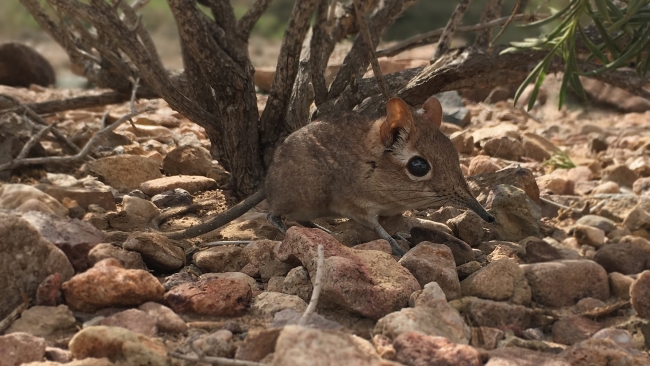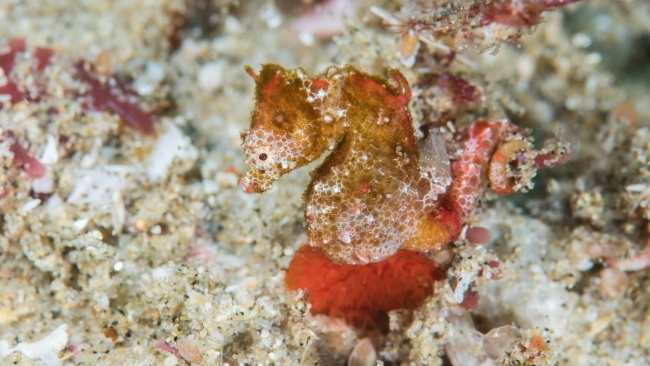This palm-sized elephant relative was just sighted for the first time in 50 years

It's related to an elephant, has a long nose, a fur tuft on its tail and big, spectacled eyes.
A teensy animal, with a long nose, a fur tuft on its tail and big, spectacled eyes hadn't been seen in nearly half a century. That is, until a whiff of peanut butter lured the wee mouse-sized mammal out from the rocky, rugged lands of Djibouti in the Horn of Africa.
The recently "rediscovered" mammal, called a Somali sengi (Elephantulus revoilii), is a species of elephant shrew. While elephant shrews are related to elephants, aardvarks and manatees — they're not elephants and they're not shrews.
The Somali sengi has not been seen since 1973. Everything known about the obscure mini mammal came from 39 individual specimens that were collected decades and centuries ago and that are now stored in museums, according to a statement from Global Wildlife Conservation.
Related: The world's 6 smallest mammals
In 2019, a group of scientists from the U.S. and Djibouti set out to look for the species after receiving tips that the creatures could be hiding in Djibouti, although the animals had only previously been found in Somalia, according to the statement.
"For us living in Djibouti, and by extension the Horn of Africa, we never considered the sengis to be 'lost,' but this new research does bring the Somali sengi back into the scientific community, which we value," co-author Houssein Rayaleh, a research ecologist and conservationist with the nonprofit organization Association Djibouti Nature, said in the statement. Rayaleh had seen the creature before — and locals had too, correctly identifying it in photos during interviews with the scientists, according to the statement.
Read more at LIVESCIENCESource: LIVESCIENCE
Wed 19 Aug 2020 at 12:54





.jpg)